SaginawIan
Hero Member
Deep in the ground, I found a horribly corroded 2 cent piece that was so covered in green patina it was quite attractive, I must say! Needless to say, date curiosity got the best of me and I decided to try a little homemade electrolosis. I used a 9 volt battery, 2 pieces of speaker wire, a cup of distilled water, and baking soda. I also used my wife's good crystal drinkware to do my experiment (but that's a story for another forum!). Anyway, what you see here is the unzapped coin and how it looks at intervals along the way, finally resulting in a disk almost entirely void of any detail. At least now I know the date, it's an 1867.
What do you think. Should I have left it alone?
Ian
What do you think. Should I have left it alone?
Ian


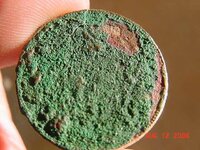
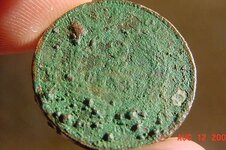
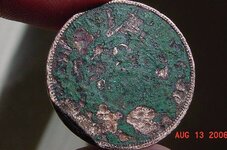
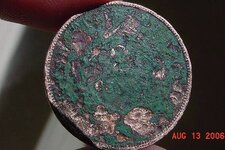
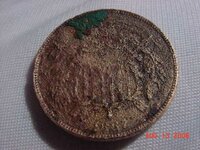
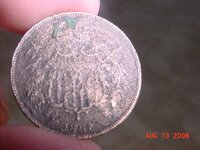
 . Don't think I woulda regretted it either because you couldn't see that much detail before anyway. A good one for the collection and lesson learned either good or bad.
. Don't think I woulda regretted it either because you couldn't see that much detail before anyway. A good one for the collection and lesson learned either good or bad.




